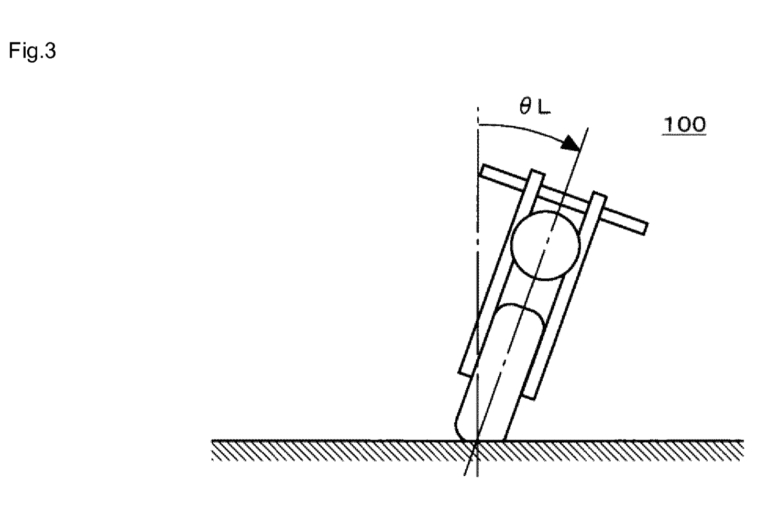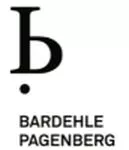The application relates to collision warning. The Applicant argued that the rider should be warned of the possibility of a collision in a way that does not distract the rider from an imminent risk of falling, as alerting the rider too abruptly may cause the motorcycle to have an accident that is even worse than the collision. However, the Board disagreed and considered that outputting a warning whose intensity is based on the risk of losing control of the motorcycle is a non-technical risk assessment.
Here are the practical takeaways from the decision: T 0813/23 of July 15, 2025, of the Technical Board of Appeal 3.5.04.
Key takeaways
Weighing up the collision risk against the risk of losing control of the motorcycle at a larger bank angle is a non-technical consideration.
Outputting a second warning "whose intensity of output is lower than the first warning and/or a warning that is output in a change pattern of a longer cycle than the first warning" in the event that the bank angle is larger than the reference bank angle means that the risk of losing control of the motorcycle at a larger bank angle is given a higher weighting than the collision risk. It is this non-technical risk assessment which is specified by the distinguishing features.
The invention
The Application defined the invention as follows:
[0004] In the conventional collision warning system, there is a case where the warning device outputs such a warning that surprises the rider in a state where the motorcycle turns, that is, in a state where a large bank angle is generated in the motorcycle and a vehicle body becomes unstable. Thus, the rider's safety is possibly affected.
[0010] In the processing unit, the collision warning system, the motorcycle, and the processing method according to the invention, the warning output by the warning device is changed in accordance with the posture information related to the bank angle of the motorcycle. Therefore, in a state where the motorcycle turns, that is, in a state where the large bank angle is generated in the motorcycle and a vehicle body becomes unstable, the warning device outputs the appropriate warning, and thus the rider's safety can be improved.

Fig.3 of EP3640916A1
Claim 1
A processing unit (20) for a collision warning system (1) that recognizes a possibility of a collision occurred to a traveling motorcycle (100) by using an environment detector (11) provided in said motorcycle (100) and warns a rider, the processing unit (20) comprising:
an acquisition section (21) that is arranged to acquire environment information corresponding to output of the environment detector (11);
a determination section (22) that is arranged to determine presence or absence of the possibility of the collision on the basis of the environment information; and
a control section (23) that is arranged to make a warning device (30) output a warning in the case where the determination section (22) determines that there is the possibility of the collision, wherein
during travel of the motorcycle (100),
the acquisition section (21) is arranged to acquire posture information related to a bank angle (thetaL) of the motorcycle (100), wherein
the control section (23) is arranged to change the warning output by the warning device (30) in accordance with the posture information,
wherein, during the travel of the motorcycle (100),
the control section (23) is arranged to make the warning device (30) output a first warning in the case where the determination section (22) determines that there is the possibility of the collision and the acquisition section (21) acquires the posture information corresponding to the bank angle (thetaL) that is smaller than a reference bank angle (thetaLth2),
characterized in that
the control section (23) is arranged to make the warning device (30) output a second warning that differs from the first warning in the case where the determination section (22) determines that there is the possibility of the collision and the acquisition section (21) acquires the posture information corresponding to the bank angle (thetaL) that is larger than the reference bank angle (thetaLth2),
wherein the second warning is a warning whose intensity of output is lower than the first warning and/or a warning that is output in a change pattern of a longer cycle than the first warning
Is it patentable?
The Board discussed then discussed the inventive step of Claim 9:
3.1 The examining division identified document D4 as the closest prior art for assessing inventive step (see decision under appeal, point 4.2). This was not contested by the appellant and the board agrees with this assessment.10.1 Claim 9 of auxiliary request 1 starting from D1..
3.3 The subject-matter of claim 1 therefore differs from the disclosure of document D4 in that claim 1 further specifies that the control section is arranged to make the warning device output a second warning that differs from the first warning in the case where the determination section determines that there is the possibility of the collision and the acquisition section acquires the posture information corresponding to the bank angle that is larger than the reference bank angle, wherein the second warning is a warning whose intensity of output is lower than the first warning and/or a warning that is output in a change pattern of a longer cycle than the first warning.
The Applicant argued that the distinguishing feature provided the following effect:
3.5 The appellant argued that the bank angle was used differently in the distinguishing features compared with document D4. In the distinguishing features a relatively high bank angle was an indicator of a risk that alerting the rider too abruptly might cause the rider to lose control of the motorcycle. In contrast, document D4 used an inclination angle of the "own" vehicle as an indicator that the motorcycle had performed an operation to avoid approaching another vehicle.
The appellant submitted that the bank angle related to a physical situation of the motorcycle and the physical forces involved. The distinguishing features therefore had technical character.
According to the appellant the effect of the distinguishing features was to ensure that the rider was warned of the possibility of a collision in such a way that the warning did not distract the rider from an imminent risk of falling due to the actual bank angle of the motorcycle. Alerting the rider too abruptly may cause the motorcycle to have an accident that is even worse than the collision.
However, the Board disagreed:
3.6 The board is not convinced by these arguments for the following reasons.
Firstly, a measurement of an inclination angle of the motorcycle and thus of the parameter characterising the physical situation of the motorcycle and the physical forces involved also takes place in a processing unit described in document D4. The distinguishing features only specify how to modify a warning on the basis of this measurement.
Secondly, weighing up the collision risk against the risk of losing control of the motorcycle at a larger bank angle is a non-technical consideration. Outputting a second warning "whose intensity of output is lower than the first warning and/or a warning that is output in a change pattern of a longer cycle than the first warning" in the event that the bank angle is larger than the reference bank angle means that the risk of losing control of the motorcycle at a larger bank angle is given a higher weighting than the collision risk. It is this non-technical risk assessment which is specified by the distinguishing features.
3.7 Features which do not contribute to the technical character of the invention cannot support the presence of an inventive step (see Case Law of the Boards of Appeal of the European Patent Office, 10th edition, 2022, I.D.9.1).
3.8 In view of the above, the board finds that the subject-matter of claim 1 does not involve an inventive step within the meaning of Article 56 EPC.
Therefore, the Board considered that the subject-matter was not inventive.
More information
You can read the full decision here: T 0813/23 of July 15, 2025, of the Technical Board of Appeal 3.5.04.
The content of this article is intended to provide a general guide to the subject matter. Specialist advice should be sought about your specific circumstances.


